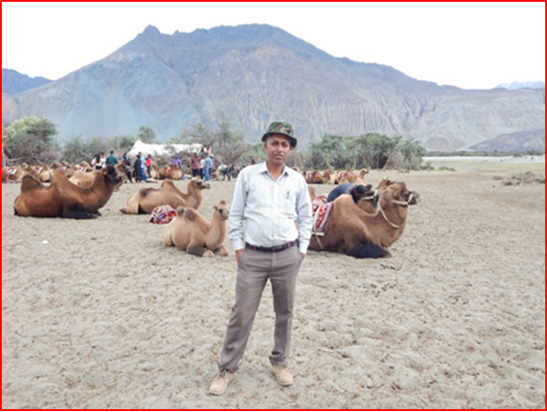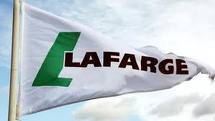Two Humped Camels: Tamed and Famed Beasts in Nubra valley of Ladakh
Ladakh is a trans-Himalayan cold desert region of India. It is famous as a land of high mountain passes, stark natural beauty, eternal peace, spiritual ambience, vibrant culture, and above all a specific ecosystem. The land of Ladakh exhibits uniqueness in topographic, climatic and biological features having greatest heights, extreme temperature gradients, toughest roads, mammoth glaciers, fabulous water bodies and distinct biodiversity. The physical features and socio-cultural milieu of Ladakh represents a collage of different colours and contrasts, thus it is truly called a Nature’s Workshop. Historically, Ladakh used to be a prominent trade centre between Tibet and India. Due to geographical location and seamless resemblance with Tibetan culture, Ladakh is sometimes called as ‘Little Tibet’. Leh is the capital city of Ladakh and invariably remains a place of big hustle and bustle. Over and above, the Ladakh is enshrined with many wonders. Visiting every nook and corner of this wonderland provides everlasting memories.

Nubra Valley in Ladakh is immensely beautiful and stunning location which displays myriad shades of pristine natural beauty and diversity. It is a Y- shaped valley formed by Shyok and Nubra rivers. The valley leads to world’s toughest battlefield – Siachen Glacier. The enchanting valley is situated at low altitude and it is about 155 km from Leh. The highly famed Khardungla Pass located at an altitude of 17982 feet above mean sea level act as gateway to this valley. The distance between Leh and Khardungla is 40 km. The road from Khardungla to Khalsar runs downwards and then driving along Shyok river upto few miles, there comes a small town named Diskit. It is the headquarters of Nubra valley which boasts of a historical masterpiece Monastery made during 14th century and an impressive 108 feet high statue of Maitreya Buddha. In Budhism, Maitreya means Future. The impressive statue of Future Budha was inaugurated by His Holliness Dalai Lama in the year 2010 and it is considered as a symbol of peace and prosperity.

Nubra valley is called as Orchard of Ladakh due occurrence of various types of stone fruits like apricots, walnuts, almonds and presence of green vistas. Apart from the panoramic natural settings, this remote valley in high-altitude cold desert offers more surprises to the avid travellers. The long stretches of shining sand dunes and herds of two humped camels alongside the river with rocky barren mountains in the background presents really awesome view. These are special type of camels found nowhere else in India. These camels with two big humps on the back are called as Bactrian camels. They are different from the single-humped camels found in Rajasthan. Actually the double humped camels are native to Central Asian countries like China, Mongolia, Afghanistan Turkmenistan, Uzbekistan and Kazakhstan, etc. The scientific name of this unique camel is Camelus bactrianus. Two- humped camels have short and firm body weighing about 4.5 to 5.0 quintals. The calm and placid animal mainly survives on Seabuckthorn (Hippophae spp) which grows naturally in cold desserts. Bactrian camel can tolerate extreme temperature ranges between -30°C to +30°C. It can carry heavy loads and work ceaselessly for long hours. Due to these features, the traders of historic silk route used these camels to carry their goods including clothes, spices, fruits, etc. But when the historic silk route was closed during 1950, a few camels were left in Nubra valley. Now, there is good number of Bactrian camels in Diskit, Sumur and Hunder Villages of Nubra Valley.


As the passion and trend for tourism in off-beaten destinations gained importance, the inhabitants of Nubra Valley domesticated these camels and capitalise on their capabilities. There is a registered Central Asia Camel Safari at Hunder Village in Nubra Valley. Tourists visiting the region never miss to have a blissful ride on the two- humped camels. The cost of the ride is good enough to fetch earning of ?2000-2500 per day to the camel owners. Evidently, the cost prise of a double humped camel is soaring upto ?70000 – ?80000 or even more. Thus, once consider as redundant, presently the double humped camels are playing a pivotal role in sustaining the livelihoods of localities. The Nubra Valley in Ladakh is extreme remote location packed with numerous views of natural beauty. Surely, a Bactrian camel ride on the sand dunes in this part of the India provides delightul feeling and fills the heart with joy.



With over 15 years of experience in Forest Ecology, Soil Analysis, and Herbarium methods, Dushyant Kumar, from Himalayan Forest Research Institute (HFRI), Shimla, has published research and technical papers related to Plant diversity, Forest Soil Properties and Medicinal plants.
Preferring to stay close to nature life cycles, he is a staunch supporter of sustainable management of nature’s resources of forests, land and rivers.


